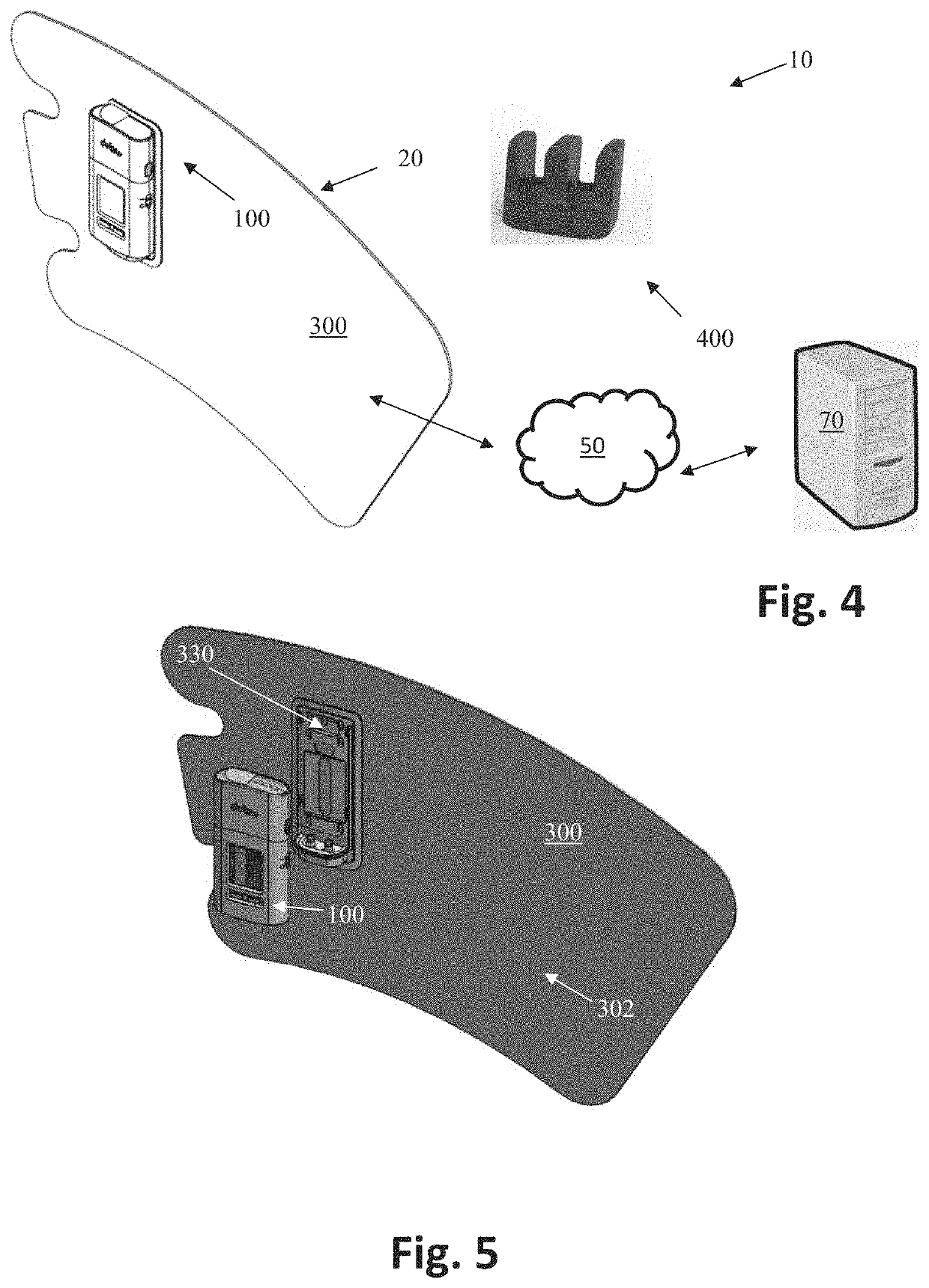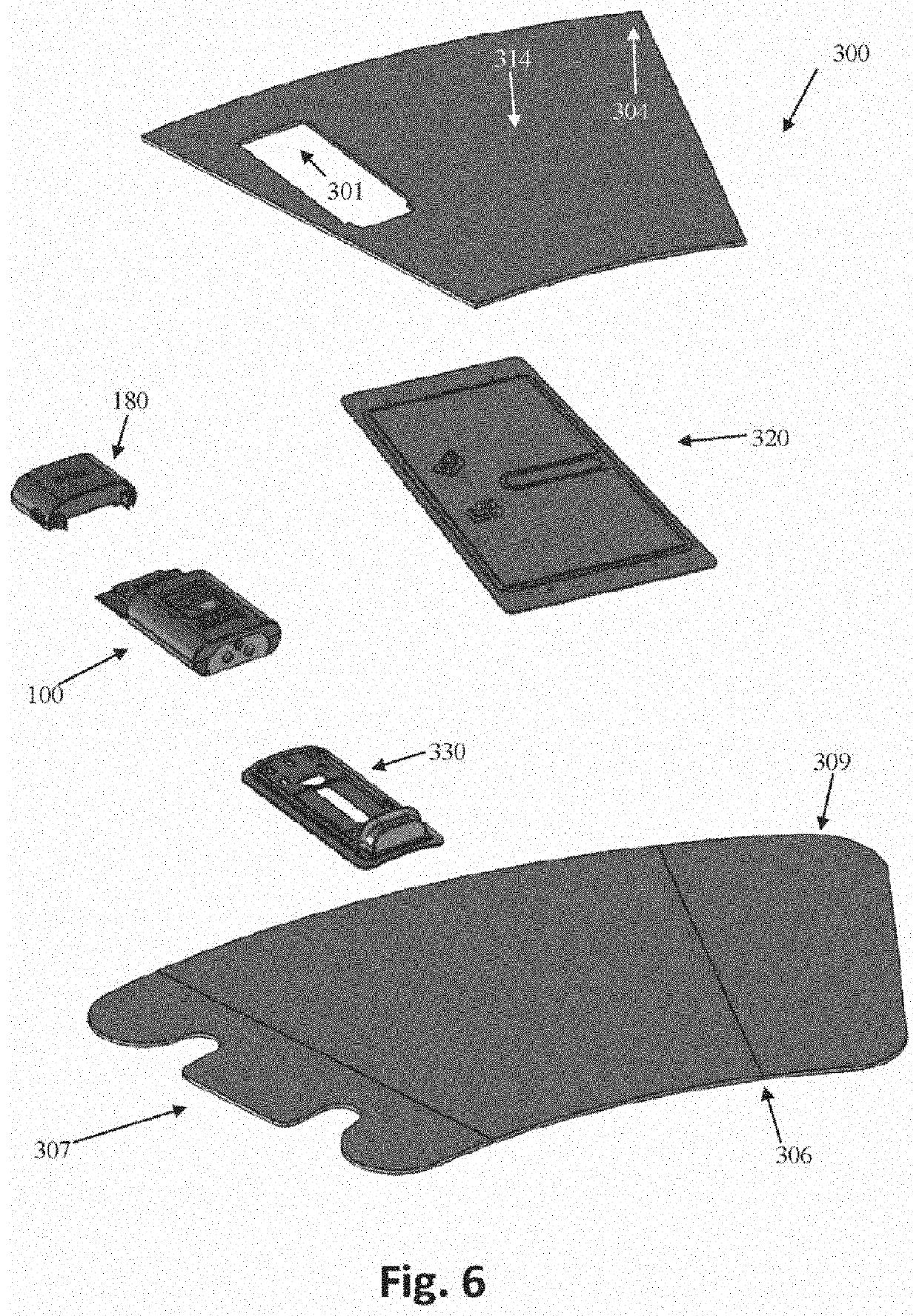While current IPCs help prevent blood clots and improve circulation within limbs suffering
edema, these IPCs still have several drawbacks, especially failing to adequately satisfying clinical needs.
Some IPC devices do not themselves provide
pneumatic pressure—they rely on external pneumatic controllers that are connected via a tube to a compression sleeve that provides the pressure to the tissue of the limb of the subject.
This design does present significant inconvenience and risk to both the patient and the hospital staff due to entanglements and the need to manage external cables and conduits.
However, many IPC devices do not have their own power sources, and must be connected to electrical outlets.
These non-mobile versions of IPCs are too bulky, and
restrict the movement of the subject to a limited area, or in many cases, a
stationary state.
Current mobile IPC devices that tubeless and have their own power sources (e.g., battery powered) provide too weak a pressure to ultimately be effectively, or fail to hold their charge for sufficient lengths of time to apply the needed therapy.
The former have inferior clinical outcomes, and the latter cause excessive work for nurse resources who must remove, recharge, and re-apply the IPC device.
In either case, currently available mobile IPC devices cannot be used continuously for a period of 18 hours in a day efficiently to meet the desired results as planned by physicians prescribing such course of treatment without being recharged while in use, requiring the user to be immobile.
In addition, the current IPC devices, mobile and immobile, present the risk of
electrocution and other electrical fault conditions because of the need to be connected to wall power for at least time during operation of the IPC device.
For mobile patients, being tethered by an electrical cable to wall power is at least inconvenient and defeats the intent of a
mobile device.
For bedridden patients, having a power source attached to the patient while in the
bed and under covers exposes the patient to various electrical risks (
electrocution, ground, user entanglement, trip hazards,
wire breakage, accidental disconnection,
confusion with other lines in the field and other phenomena).
Because of these risks, hospitals currently do not use mobile IPC devices where power cables are attached at any point to the patient.
In such instances, the IPCs are tethered to a computer in order to ensure that the patient is maintaining the
treatment plan, severely impacting the
quality of life of the patient.
In addition, many portable IPC devices are only configured to use with a
single patient.
That is, once an IPC device is been used by a patient, for sanitary purposes, it cannot be used by additional users.
These devices are completely disposable and do not enable cleaning or recycling of the components.
The single-use nature of these mobile IPC devise requires the use of materials and components that are sourced for low cost and not for reliability or performance.
These lower-quality devices tend to have few features, cheap sleeves, and inexpensive controllers that result in variable performance that risk good patient outcomes.
The dissembled devise consists of a pneumatic controller and a sleeve with a very long pneumatic conduit hanging off to the side, which is difficult to manage and is a source of
irritation to the user.
These hook and loop portable IPC devices typically have a loose and weak attachment between the pneumatic controller and the sleeve.
Such weak connections lead to attachment fails in several mechanical conditions that occur during normal use like vigorous leg movement or when the IPC device bumps into objects
during ambulation.
Another drawback is that these fails over time lead to the hooks becoming broken or clogged with debris and / or the hook-receptive surface frays and loses the ability to attach to the hooks on the pneumatic controller.
The other IPC devices that use mechanical clasps to removably attach the controller to the sleeve suffer from the inconvenience of having to undue multiple mechanical attachments before the pneumatic controller can be removed from the sleeve.
The mechanical claps used for some of these devices do not appear to be robust.
Overall, the designs used for portable IPC devices allow for too much
user error and lead to user
frustration.
If the sleeve is not properly constructed to conduct heat and
moisture away from the
skin, the sleeve can cause the patient great discomfort.
If not properly constructed,
skin irritations, caused by trapped heat and
moisture, can result.
Prior art sleeves have also failed to conform to the complex user
anatomy while maintaining sufficient
mechanical integrity to hold the bladder in place during use and convey
mechanical energy into the underlying tissues.
If the sleeve material is too compliant (flexible), the sleeve will stretch when the bladder inflates and the
mechanical energy intended for
tissue therapy will be made less effective by stretching the fabric instead of compressing the underlying tissues.
If the sleeve material is too stiff (rigid), the sleeve will not be able to wrap and accommodate the underlying tissue intending to be treated.
The wrinkled sleeve may enable the pneumatic bladder to migrate within the sleeve when inflated or the bladder could inflate within the wrinkled space and apply energy to the rigid sleeve material instead of the underlying tissues, thus reducing the user's therapeutic experience.
If the bladder is improperly located or allowed to migrate, the patient will not benefit from the IPCD therapy.
Adding new weld seals also increases the risk of pneumatic leaks.
Another liability of these seals within the bladder's inflated region is the increase in geometric complexity and the likelihood of introducing stress raisers in the inflated envelope that can lead to either burst failures or fatigue failures (cyclic inflation causes mechanical damage due to the presence of a weld that accumulates over time).
That is, there is no way to remove the bladder from the sleeve and / or the other components of the IPC device, so that when the sleeve fails, the bladder is discarded with the sleeve.
 Login to View More
Login to View More  Login to View More
Login to View More 


